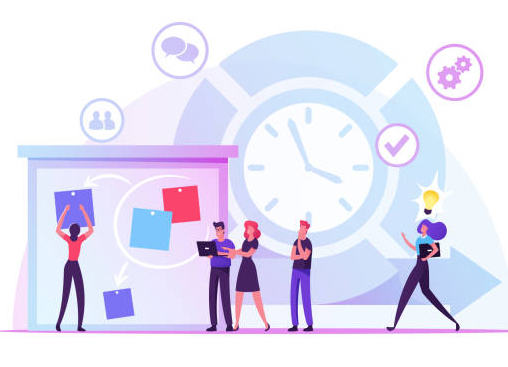
- October 11, 2021
- Team Development
Team Development Life Cycle
How to make a dream team? At least how to make a functional team? How to fix a dysfunctional team?
In 1964, psychologist Bruce Tuckman first came up with the Stages of Team Development model. The model explains how a team develops over time, which consists of four key stages, “forming, storming, norming and performing”. An additional stage was later added in 1977, this stage is “adjourning”, which is used to describe the break-up of a team following project completion. Tuckman believes that all phases are both essential and inevitable for team growth.
The above questions can be answered using Tuckman’s model which was hard to believe at its inception, people discredited the concept on the ground that it lacked scientific vigor. Later on Tuckman did further more empirical research thus satisfying the critics of his time.
5 Stages in a nutshell
At first a bunch of individuals are assessed on whether they are a fit to be part of a team whose objective is defined. The basis of this ‘team formation’ might be ignorance, convenience or deep analysis. Then once the team is put together, they start to enter into conflict with one another over minor and major issues. This stage is called “storming” connoting the imagery of storm as dark thunder-some. Many teams never pass this stage thinking conflict is because of poor team formation or poor project selection or sheer bad luck.
Somehow if the team members are able to resolve their differences and focus on complimenting each other’s strength and weakness, a process called “norming” occurs. The term again denotes that the stormy weather has normalized. In this stage, team members realize they are better off cooperating with one another omitting trivial things, than breaking up.
It has this point the tipping point occurs and the team starts “performing”. This stage also can be graded from normal performance to dream team level performance.
Based from an article by David Priestley, ventureteambuilding.co.uk/forming-storming-norming-performing/, we can recognize which stage the team is based on the following behaviors:
Forming stage
Desired outcomes of the forming stage include:
● Understanding the team purpose (end result)
● Determining how the team will be organized
● Delegating responsibilities and accountability
● Discussion of milestones or short term goals
● Outlining team rules including future meeting dates
● Discussion of resources available
Storming stage
Storming behaviors include:
● Challenging authority
● Resisting opinions and improvements suggested by others
● Negative mind set and attitude about the team and the project’s success
● Arguments amongst team members even when they agree
● External factors and company culture
● Competition, support and forming of smaller teams
● Questioning the team’s goal and resistance to taking on tasks
Norming stage
Norming behaviors include:
● Ability to offer and accept constructive criticism
● Open communication and discussions independently
● An attempt to avoid conflict whenever possible for greater good of the team
● Better working relationships, supporting and trusting each other
● Improved team ethos, cohesion and spirit
● Establishing and maintaining team rules and expectations
Performing stage
Performing behaviors include:
● Individuals can clearly identify their role within the team and appreciate other team member’s strengths and weaknesses.
● Members have the ability to prevent or continue working through issues that arise.
● Everyone demonstrates a great working relationships and support for each other.
● Members direct their energies towards the attainment of goals.
● The team have adopted procedures for making decisions, including how to sharing leadership responsibilities and work delegation.
● Individuals have a sense of freedom and a sense of belonging.
The Role of Team Leader
He plays a crucial role. Without the good leader, the team will become dysfunctional if not break up. The responsibility of the team leader is to provide direction, identify working strategies and processes and delegate responsibility and accountability within the team. The leader must have a clear understanding of the project and project scope and be prepared to answer lots of questions about the team’s purpose, objectives and external expectations.
The most valuable part a team leader can play is to recognize which stage of development the team is performing at and provide the appropriate support to ensure improved team development and eventual project success. Once established, use strategies that will move your team through to the next stage in the team formation process. By following this simple process, you will quickly have a high-performing team.
Conclusion
Team development is not as mysterious as we might fear it to be. By learning the model presented here, you as a leader or team member can make the dream team.
Categories
Archive Post





